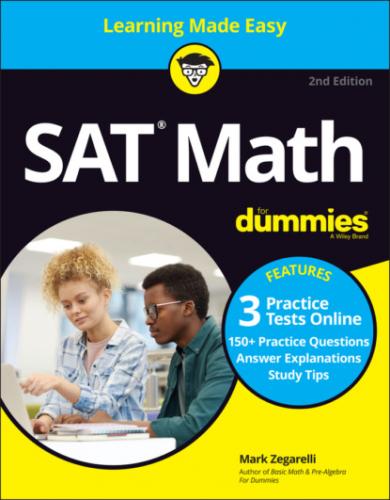While you fully absorb that difficult truth, I will add that there’s a reasonable amount of strategy you should absolutely know before taking your first SAT. And while you may think that lots of students already know this stuff, plenty of others don’t — yet.
I don’t want you to be one of them.
So read on.
Is there a penalty for guessing?
If you have an older brother or sister who took the SAT before 2016, they may remember the old format, which had a penalty for filling in a wrong answer.
So please take note: The SAT in its current form has no penalty for filling in a wrong answer. This goes for all four sections, the English as well as the math sections.
Obviously, then, you want to make sure that you fill in at least some answer for each multiple-choice question on the two math sections. That’s 45 questions, so by pure chance, you can expect to get about 11 questions right just by making wild guesses.
Let’s take that thinking a step further: If you don’t fill guesses for all the questions you don’t have time to think about, you’ll be competing against a ton of other students who are guessing. So, bottom line, you can’t afford not to guess every question you don’t know the answer to.
What about the gridded-response questions? Well, because these questions are entirely open ended, you don’t have much chance of answering them correctly with a wild guess. But if you have any idea what the answer might be, go ahead and grid it in. Worst case, doing this won’t lose you any points.
Are some questions harder than others?
Generally speaking, SAT Math questions fall into three categories of difficulty: easy, medium, and hard.
In both the No Calculator and Calculator sections of the test, the multiple-choice questions are roughly in order from easy, to medium, to hard. And then this pattern repeats, with the shorter grid-in question section also progressing from easy, to medium, to hard.
Table 1-1 shows the rough breakdown of questions by difficulty levels.
TABLE 1-1 Easy, Medium, and Hard Questions
| Section 3 — No Calculator | Section 4 — Calculator | ||||
|---|---|---|---|---|---|
| Question Type | Question Number | Difficulty Level | Question Type | Question Number | Difficulty Level |
| Multiple Choice | 1-5 | Easy | Multiple Choice | 1-10 | Easy |
| 6-10 | Medium | 11-20 | Medium | ||
| 11-15 | Hard | 20-30 | Hard | ||
| Grid-In | 16-17 | Easy | Grid-In | 31-33 | Easy |
| 18 | Medium | 34-35 | Medium | ||
| 19-20 | Hard | 36-38 | Hard |
Remember that every question counts for one point toward your raw score, which directly affects your scaled score (200–800). So, unlike the tests you take in school, the easiest and hardest questions on the SAT both have the same value.
Do I have to answer every question?
The short answer is, no, you don’t have to answer every SAT math question to get a good score.
In fact, depending on your current performance level on practice tests, it may very well be to your benefit not to answer all the questions.
This piece of strategy definitely goes against a lot of your training as a high school student. After all, in most of your classes, you can’t get an A or even a B on a test without answering just about all the questions. If you only answer 75 percent and skip the rest, even if you answer perfectly, probably the best you can hope for is a C.
However, the situation with the SAT is entirely different.
On the SAT, you can get a 500 math score by answering only about 55 percent of the questions on the test correctly.
I dive more deeply into this aspect of strategy later in this section, when I ask you to consider your own personal starting point, path, and goal for the SAT.
For now — and this goes double if you’re a perfectionist — simply let go of the compulsive need to answer all 58 math questions on the SAT. Until you’re already scoring 740+ on your practice tests, answering all the questions would be a poor allocation of your time. If you’re answering all the questions, you’re probably rushing through questions that are within your reach, and losing points you should be getting.
So, how many questions should I answer?
The answer to this question depends on your current score, which I break down into three basic scenarios.
Clearing 500
Most schools prefer to enroll students who have an SAT composite score of at least 1,000, which is approximately 500 on both the English and the math tests.
If your English score is 550 or higher, you may be able to get away with a math score that’s slightly less than 500. Even so, a good first goal would be to break 500 on the math test.
To get this score, you need to answer about 32 of the 58 SAT math questions correctly. To this end, refer to Table 1-1, and then plan to do the following:
Attempt to answer all 20 easy questions correctly.
Choose 12 out of 18 medium questions to answer correctly, and guess the rest.
Guess on the 20 hard questions.
I know it seems weird to guess so many questions. But the SAT is different from the tests you take in school, where you need to get at least 80 percent right to get a decent grade.
Choosing 32 easy and medium questions to focus on gives you almost three minutes per question, which increases your changes of answering more questions correctly. And remember that you have a 25 percent chance of guessing each multiple-choice question
